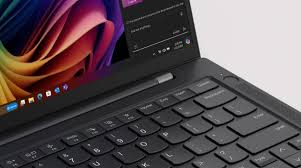Lenovo has announced that its upcoming ThinkPad T14s Gen 6 can achieve an astonishing 29 hours of local video playback on a single charge. The claim, initially made on the Chinese social media platform Weibo by the official ThinkPad account, is yet another bold declaration in the ongoing competition among PC manufacturers to extend battery life.

The ThinkPad T14s Gen 6 is powered by Qualcomm’s Snapdragon X Elite chip, a processor known for its efficiency and performance. Recent advances in Snapdragon-powered laptops have shown promise in pushing the boundaries of battery life, with several models boasting impressive longevity. However, Lenovo’s 29-hour claim surpasses its competitors, at least on paper.
While the idea of a laptop lasting over a day without needing a recharge is enticing, it’s important to approach these claims with caution. Battery life claims based on local video playback can be misleading for average users, as these tests are conducted under controlled conditions that do not necessarily reflect typical usage.
Local video playback tests involve playing a video stored on the laptop’s hard drive while all other functions, such as Wi-Fi, Bluetooth, and background applications, are disabled. This scenario rarely mirrors real-world usage, where users often engage in tasks such as browsing the internet, running software applications, and streaming content. As a result, actual battery life for everyday tasks is often significantly lower.
For example, the HP OmniBook X, another Snapdragon-powered laptop, claimed up to 26 hours of local video playback. However, independent tests revealed a more realistic 13 hours and 37 minutes of web browsing and 22 hours and 4 minutes of video playback. If Lenovo’s tests are similarly optimistic, users might expect closer to 15-20 hours of actual use, depending on the tasks performed.
The use of Qualcomm’s Snapdragon X Elite chip is a key factor in Lenovo’s battery life claim. Snapdragon processors, typically found in smartphones and tablets, are designed for efficiency and long-lasting performance. Their integration into laptops is part of a broader trend toward ARM-based chips in the PC market, a shift driven by the desire for more portable and energy-efficient devices.
ARM-based chips, including Apple’s M-series processors, have demonstrated that significant gains in battery life and performance are possible. This shift is gradually challenging the dominance of traditional x86 processors from Intel and AMD in the laptop market. Qualcomm, in particular, has been aggressively positioning its Snapdragon chips as viable alternatives for lightweight laptops and ultraportables.
Beyond its battery life, the ThinkPad T14s Gen 6 offers a robust set of features tailored for professional use. It comes equipped with an integrated Qualcomm Adreno GPU, 32 GB of RAM, 1 TB of storage, and a 14-inch IPS display. The laptop is designed to handle demanding tasks such as video transcoding, large data set analysis, and software development.
Connectivity is another highlight, with the T14s Gen 6 featuring two USB-A ports, two USB-C ports, an HDMI 2.1 port, and an optional Nano SIM slot for cellular connectivity. Security features include a fingerprint reader and an infrared camera for biometric login. These specifications align with Lenovo’s positioning of the ThinkPad series as a go-to choice for professionals seeking reliability and performance.
The ThinkPad T14s Gen 6 is listed on Lenovo’s U.S. website at $1,754.35, positioning it as a premium offering within the ThinkPad lineup.
While Lenovo’s 29-hour battery claim is ambitious, it underscores the company’s commitment to innovation and the ongoing race to extend laptop battery life. Whether this claim holds up under real-world conditions remains to be seen, but the excitement surrounding Snapdragon-powered laptops suggests a promising future for portable computing.
As technology continues to evolve, users can expect even more breakthroughs in battery efficiency, paving the way for laptops that truly meet the demands of modern work and lifestyle. Lenovo’s latest offering is a step in that direction, pushing the boundaries of what users can expect from their devices.



